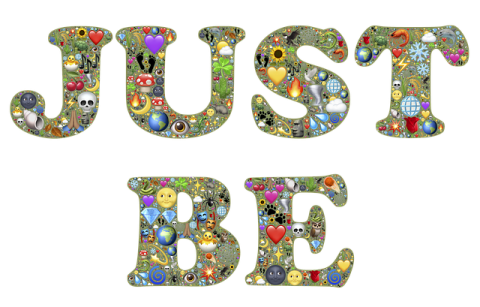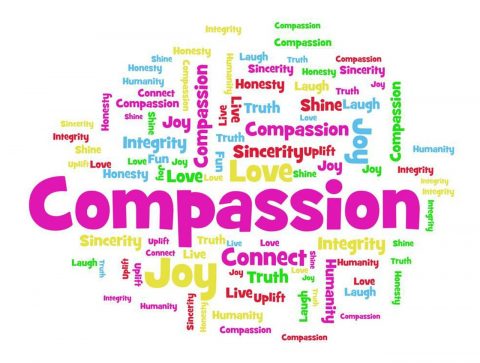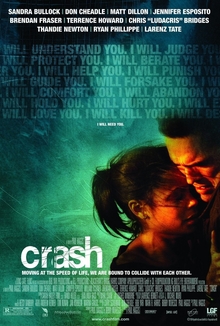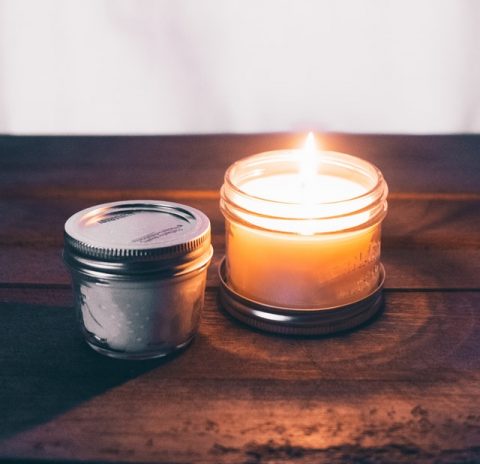
We writers love our tools. From software programs like Scrivener, Evernote, and Google docs to apps that block online distractions, we all swear by our systems. Some of us even write using treadmill desks and stability balls to keep our backs in shape. But have you ever considered adding a meditation practice to your writer’s toolbox?
 I’m always looking for a competitive edge. Will exercise, coffee, vitamins or a good night’s sleep help me to write better? So, when I read that science has proven meditation actually restructures the brain, I was intrigued. After all, in Silicon Valley where I live, companies like Google, Twitter and Facebook have been offering “Search Inside Yourself” training for years. Classes like Neural Self-Hacking and Managing Your Energy make for lunch hours that “maximize mindfulness” and spark creativity.
I’m always looking for a competitive edge. Will exercise, coffee, vitamins or a good night’s sleep help me to write better? So, when I read that science has proven meditation actually restructures the brain, I was intrigued. After all, in Silicon Valley where I live, companies like Google, Twitter and Facebook have been offering “Search Inside Yourself” training for years. Classes like Neural Self-Hacking and Managing Your Energy make for lunch hours that “maximize mindfulness” and spark creativity.
So when a friend told me about an 8-week mindfulness mediation course offered by Teri Dahlbeck, an executive coach with a background in neuroscience, http://www.simplifiedcoach.com, I agreed to give it a try. Dahlbeck introduced me to the work of several meditation teachers, including author Sharon Salzberg. “The adult brain is capable of neuroplasticity—that is, forming new cells and pathways,” Salzberg writes in her book, Real Happiness: The Power of Meditation. “Throughout life, the brain rewires and reshapes itself in response to environment, experience and training. And meditation is one of those brain-changing experiences.”
Practicing mindfulness has nothing to do with New Age crystals, Tarot cards, religion or runes. It’s simply a way of training our attention so that we become more aware of our inner feelings as well as what’s happening around us in the outside world. There is no one right way to do it too; you can focus on the breath, a mantra, an image, do a body scan, etc. The important thing is that meditation cultivates three key skills: concentration, mindfulness and compassion—also known as lovingkindness. For writers, these brain-changing skills can have game-changing results. Here’s why.
Concentration: Meditation helps improve our powers of concentration. Making it a daily practice reinforces habits of discipline and the ability to let go of distractions. If I’m stressed, the chatter in my mind often intensifies, robbing me of the ability to write. Niggling thoughts, worries and doubts flit like gnats in and out of my brain, blocking my creativity. So how do we find that heightened mental state known as “flow,” where the outside world falls away and we feel alert and able to focus with laser sharp intensity? Meditation can help get us there, in part because it eases anxiety.
 In a post (“7 Ways Meditation Increases Creativity”) on the link between meditation and creativity in writer Jane Friedman’s blog, author Orna Ross says, “It’s not easy putting yourself out there, day after day, in words. It makes us a little crazy—vulnerable, edgy, raw sometimes. Meditation soothes those edges and creates a place of safety from where we can take risks.” Ross, too, cites the science behind the claims. “Brain scans show that meditation reduces activity in the amygdala, where the brain processes fear. It allows us to become, as Flaubert suggested we should, steady and well-ordered in our life so we can be fierce and original in our work.”
In a post (“7 Ways Meditation Increases Creativity”) on the link between meditation and creativity in writer Jane Friedman’s blog, author Orna Ross says, “It’s not easy putting yourself out there, day after day, in words. It makes us a little crazy—vulnerable, edgy, raw sometimes. Meditation soothes those edges and creates a place of safety from where we can take risks.” Ross, too, cites the science behind the claims. “Brain scans show that meditation reduces activity in the amygdala, where the brain processes fear. It allows us to become, as Flaubert suggested we should, steady and well-ordered in our life so we can be fierce and original in our work.”
Mindfulness: Remember the adage, “show don’t tell”? Mindfulness teaches us to observe our emotions and notice where strong feelings are felt in the body. I often ask my writing students, what did you notice today? My goal is to get them to slow down and focus on moment-to-moment awareness. To pay attention to what’s going on in and around them, including how things smell and taste and sound. If we’re nervous, for instance, how do we hold our hands or move our bodies? Do we bite our lips, grit our teeth, or jiggle our legs? Emotions are rarely a single, solid sentiment. Anger, for example, may also include feelings of frustration, helplessness, sadness and fear. Realizing this can help us all write better scenes.
“Try to have a direct physical and tactile experience as you’re performing everyday activities,” Salzberg instructs. “Feel a water glass against your hands as a cool hardness. When you sweep the floor, sense the exertion in your arms, the tug on the muscles of your back and neck.”
With practice, my awareness too has begun to improve. I’m noticing how emotions like anxiety can cause my chest to swell up like an overinflated balloon. Or how the scent of a cup of chamomile tea and the steam rising in my face can cause my shoulders to drop and my breath to slow. The things your characters notice speak volumes about them. So, if you want to slip into someone’s skin, practice focusing on “just this moment now.”
 Compassion or Lovingkindness: In order to understand how our protagonists feel, writers must have empathy and compassion.
Compassion or Lovingkindness: In order to understand how our protagonists feel, writers must have empathy and compassion.
I believe that the best way to create authentic, complex characters, whose humanness readers can recognize no matter how badly they behave, is to walk a mile in their shoes. Meditation encourages us to extend this kind of lovingkindness to others as well as to ourselves.
Whatever our excuses are for not writing—or not succeeding at our writing—it’s always tempting to throw in the towel. With other kinds of work, I know I can finish the job if I just put in the hours. But writing is different, because we can’t force creativity. In meditation, I’m encouraged to be kind and gentle to myself even when I fail. Whether my distractions are positive or negative, I’m learning how to accept interruptions, gently forgive myself for wandering, and then keep on keeping on. “If you have to let go of distractions and begin again thousands of times, fine,” says Salzberg. “That’s not a roadblock to the practice—that is the practice. That’s life: starting over, one breath [one page] at a time.”
Namaste


 Think back on the books you love, and invariably it’s the protagonist who comes to mind. Characters are the heart and soul of our stories, and I’ve spent months and sometimes years getting to know mine. But in my systematic efforts to pin down their personalities, I sometimes sacrifice what’s most important: the element of surprise. Even when I think I know my protagonist—her pet peeve, greatest fear, secret ambition, which songs she sings in the shower, and what makes her cry—it doesn’t mean her actions should be consistent.
Think back on the books you love, and invariably it’s the protagonist who comes to mind. Characters are the heart and soul of our stories, and I’ve spent months and sometimes years getting to know mine. But in my systematic efforts to pin down their personalities, I sometimes sacrifice what’s most important: the element of surprise. Even when I think I know my protagonist—her pet peeve, greatest fear, secret ambition, which songs she sings in the shower, and what makes her cry—it doesn’t mean her actions should be consistent.
 Oxymoronic complexities create unforgettable characters. Characters like Frankenstein (a sweet monster), Boo Radley from To Kill a Mockingbird (a gentle madman), Jean Valjean in Les Miserables (an honest thief), and in real life, actor Robin Williams (the sad funny man). In contemporary YA, I couldn’t stop thinking about Keir Sarafian (a well meaning rapist) from Chris Lynch’s Inexcusable, or Marcelo Sandoval, the autistic 17-year-old protagonist of Francisco Stork’s Marcelo in the Real World. Initially, Marcelo appears isolated and incapable of relating to or understanding other people . But as we gradually come to see, it’s those other people in the story who are impaired—like Arturo, Marcelo’s high achieving, Harvard-educated, lawyer dad. Despite his intelligence, Arturo is blind when it comes to seeing the truth about the people around him. As a hypocritical, greedy, philandering father who genuinely loves his wife and kids, he too is full of incongruities.
Oxymoronic complexities create unforgettable characters. Characters like Frankenstein (a sweet monster), Boo Radley from To Kill a Mockingbird (a gentle madman), Jean Valjean in Les Miserables (an honest thief), and in real life, actor Robin Williams (the sad funny man). In contemporary YA, I couldn’t stop thinking about Keir Sarafian (a well meaning rapist) from Chris Lynch’s Inexcusable, or Marcelo Sandoval, the autistic 17-year-old protagonist of Francisco Stork’s Marcelo in the Real World. Initially, Marcelo appears isolated and incapable of relating to or understanding other people . But as we gradually come to see, it’s those other people in the story who are impaired—like Arturo, Marcelo’s high achieving, Harvard-educated, lawyer dad. Despite his intelligence, Arturo is blind when it comes to seeing the truth about the people around him. As a hypocritical, greedy, philandering father who genuinely loves his wife and kids, he too is full of incongruities. Character contradictions can help create empathy. When the thug reveals his vulnerability—through his fear of an abusive father or his worry about an incarcerated brother—that’s when we start to care. The superficial, shallow cheerleader can seem like a type—until she goes home to care for a handicapped sister or cancer-stricken mother.
Character contradictions can help create empathy. When the thug reveals his vulnerability—through his fear of an abusive father or his worry about an incarcerated brother—that’s when we start to care. The superficial, shallow cheerleader can seem like a type—until she goes home to care for a handicapped sister or cancer-stricken mother. Names have associations and images. Would you call a jock Horace? A popular cheerleader Beulah or Gertrude? Give a shy, artistic guy the name of Spike? Probably not…unless there’s a reason to upend your reader’s expectations. Ironic names can be a hugely effective way to ignite a reader’s interest, surprise us or make us laugh.
Names have associations and images. Would you call a jock Horace? A popular cheerleader Beulah or Gertrude? Give a shy, artistic guy the name of Spike? Probably not…unless there’s a reason to upend your reader’s expectations. Ironic names can be a hugely effective way to ignite a reader’s interest, surprise us or make us laugh. Appearance. Clothes, hair, body type, fitness level, facial expressions, mannerisms, gestures and speech all provide clues to character. But throw in character contradictions—make that pouty blond in the mini skirt a rocket scientist—and the reader does a double take. My son’s wife wore dusty work boots under her beautiful gown at their wedding ceremony—a statement about their life as farmers.
Appearance. Clothes, hair, body type, fitness level, facial expressions, mannerisms, gestures and speech all provide clues to character. But throw in character contradictions—make that pouty blond in the mini skirt a rocket scientist—and the reader does a double take. My son’s wife wore dusty work boots under her beautiful gown at their wedding ceremony—a statement about their life as farmers.


 Set working hours: It doesn’t matter when you write as long as you stick to a timetable. “My most productive hours are in the morning,” Jacobus says, “so I get to my computer by 7:30 but by 8:30 at the latest.”
Set working hours: It doesn’t matter when you write as long as you stick to a timetable. “My most productive hours are in the morning,” Jacobus says, “so I get to my computer by 7:30 but by 8:30 at the latest.” rituals:
rituals:  Meditation, prayer, lighting candles, reading inspirational passages, and jogging were some of the most raved-about routines. Exercise happens to be my favorite prewriting routine with spin class winning out as the most effective epiphany- inducing technique. Somewhere between slightly breathless and heart-stopping hard, solutions to my plot problems and story
Meditation, prayer, lighting candles, reading inspirational passages, and jogging were some of the most raved-about routines. Exercise happens to be my favorite prewriting routine with spin class winning out as the most effective epiphany- inducing technique. Somewhere between slightly breathless and heart-stopping hard, solutions to my plot problems and story
 1. Teaching Gives You Permission to Play: To children, play comes naturally. But by the time you’re old enough to be an instructor, this instinct has pretty much been wrung out of you. But in programs where improv and movement games are used to energize students and help them find the truth in their stories, writers can rediscover their inner child.
1. Teaching Gives You Permission to Play: To children, play comes naturally. But by the time you’re old enough to be an instructor, this instinct has pretty much been wrung out of you. But in programs where improv and movement games are used to energize students and help them find the truth in their stories, writers can rediscover their inner child. It makes sense to get up from your desk and move. When writing scenes, I need to make noises and faces, gnash my teeth, hum, curse, laugh and moan. Sometimes I act out conversations or roll around on the floor. I constantly run to the mirror, so I can describe the expression on my face. How do you show anger, jealousy, or humiliation? Throw out a prompt and watch a couple of fifth graders take the floor and use their bodies to teach you what those emotions look like. Sometimes, I can’t take notes fast enough.
It makes sense to get up from your desk and move. When writing scenes, I need to make noises and faces, gnash my teeth, hum, curse, laugh and moan. Sometimes I act out conversations or roll around on the floor. I constantly run to the mirror, so I can describe the expression on my face. How do you show anger, jealousy, or humiliation? Throw out a prompt and watch a couple of fifth graders take the floor and use their bodies to teach you what those emotions look like. Sometimes, I can’t take notes fast enough.


 3. You Get to Walk in Their Shoes: You may be surprised to hear this, but kids on television and film are not always depicted realistically. How do real teens think, act and talk? Working in classrooms and private homes (I do both) enables me to study young readers in their native habitats. Reading the stories they write gives me valuable insights into what makes my target audience tick. And when students’ eyes glaze over in class, I know exactly when my material has failed and I’ve lost their attention (unlike the anonymous readers of our books). My biggest teaching surprise, however, has been that gender stereotypes often hold true. My boys tend to write about bombs, bullet holes and dystopian worlds (what I call “tough guys in space”), whereas my girls gravitate towards domestic drama and stories that involve “mean girls in school.” Is this cultural conditioning or in the DNA?
3. You Get to Walk in Their Shoes: You may be surprised to hear this, but kids on television and film are not always depicted realistically. How do real teens think, act and talk? Working in classrooms and private homes (I do both) enables me to study young readers in their native habitats. Reading the stories they write gives me valuable insights into what makes my target audience tick. And when students’ eyes glaze over in class, I know exactly when my material has failed and I’ve lost their attention (unlike the anonymous readers of our books). My biggest teaching surprise, however, has been that gender stereotypes often hold true. My boys tend to write about bombs, bullet holes and dystopian worlds (what I call “tough guys in space”), whereas my girls gravitate towards domestic drama and stories that involve “mean girls in school.” Is this cultural conditioning or in the DNA?